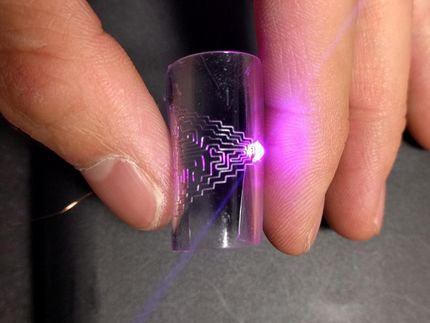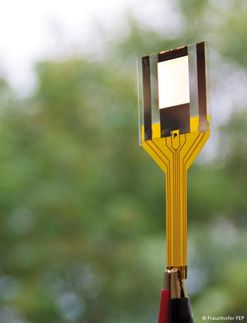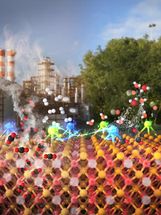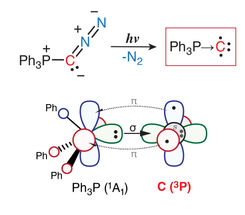Paint-on plastic electronics: Aligning polymers for high performance
Semiconducting polymers are an unruly bunch, but University of Michigan engineers have developed a new method for getting them in line that could pave the way for cheaper, greener, "paint-on" plastic electronics.
"This is for the first time a thin-layer, conducting, highly aligned film for high-performance, paintable, directly writeable plastic electronics," said Jinsang Kim, U-M professor of materials science and engineering, who led the research published in Nature Materials.
Semiconductors are the key ingredient for computer processors, solar cells and LED displays, but they are expensive. Inorganic semiconductors like silicon require high temperatures in excess of 2,000 degrees Fahrenheit and costly vacuum systems for processing into electronics, but organic and plastic semiconductors can be prepared on a basic lab bench.
The trouble is that charge carriers, like electrons, can't move through plastics nearly as easily as they can move through inorganic semiconductors, Kim said. Part of the reason for this is because each semiconducting polymer molecule is like a short wire, and these wires are randomly arranged.
"Charge mobility along the polymer chains is much faster than between the polymers," Kim said.
To take advantage of the good conduction along the polymers, research groups have been trying to align them into a charge-carrying freeway, but it's a bit like trying to arrange nanoscopic linguine.
Kim's group approached the problem by making smarter semiconducting polymers. They wanted a liquid polymer solution they could brush over a surface, and the molecules would automatically align with one another in the direction of the stroke, assembling into high-performance semiconducting thin-layer films.
First, they designed the polymers to be slippery—ordinary polymers glom together like flat noodles left in the fridge, Kim said. By choosing polymers with a natural twist, the team kept them from sticking to one another in the solution. But in order to align during the brushstroke, the polymers needed to subtly attract one another. Flat surfaces would do that, so the team designed their polymer to untwist as the solvent dried up.
They stopped the unaligned polymers from forming large chunks by adding flexible arms that extended off to the sides of the flat, wire-like polymer. These arms prevented too much close contact among the polymers while the bulkiness of the arms kept them from snagging on one another. Polymers with these properties will line up in the direction of an applied force, such as the tug of a paintbrush.
"It's a big breakthrough," Kim said. "We established a complete molecular design principle of semiconducting polymers with directed alignment capability."
And it works. The team made molecules that matched their design and built a device for spreading the polymer solution over surfaces such as glass or a flexible plastic film. The force from the silicon blade, moving at a constant speed across the liquid polymer, was enough to align the molecules.
The team then built the semiconducting film into a simple transistor, a version of the electronic components that make up computer processors. The device demonstrated the importance of the polymer alignment by showing that charge carriers moved 1,000 times faster in the direction parallel to the silicon blade's brushstroke than they did when crossing the direction of the stroke.
"By combining the established molecular design principle with a polymer that has a very good intrinsic charge carrier mobility, we believe it will make a huge difference in organic electronics," he said. "We are currently developing a versatile fabrication method in order to realize high-performance and paintable plastic electronics in various length scales from nanometers to meters."
Kim believes that the technique will work equally well with atomic-scale pen nibs or large trowel-like applicators for making electronics of all sizes such as LED displays or light-absorbing coatings for solar cells.
























































